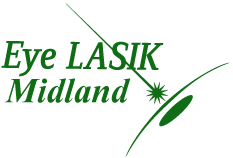
by EyeLASIK | Mar 7, 2017 | eye health, Health Facts
 Most tired people immediately reach for caffeine as a boost to their energy throughout the day. Though the pros and cons of caffeine have been well documented throughout the years, we’re here to explain how caffeine affects your eyes. So grab a cup of (decaf) tea and read on for more.
Most tired people immediately reach for caffeine as a boost to their energy throughout the day. Though the pros and cons of caffeine have been well documented throughout the years, we’re here to explain how caffeine affects your eyes. So grab a cup of (decaf) tea and read on for more.
What Is Caffeine?
Caffeine is a chemical found naturally in over 60 plants. It is considered a nervous system stimulant, giving the body a “jolt” of energy within 30-45 minutes after consumption. It is found is beverages such as coffee, tea, and energy drinks and even in foods, like chocolate.
How Caffeine Affects Your Eyes
As much as we love getting the boost of energy from caffeine, there are several ways how caffeine affects your eyes.
Increased Glaucoma Risks
According to a new study, people who consumer 3 or more cups of coffee each day increase their risk of developing certain types of glaucoma. However, the study couldn’t conclude that other sources of caffeine had the same results. Do you need to give up the cup of Joe? Not really. A cup or two daily won’t be enough to increase your risk, though it’s important to be aware of how much you’re consuming.
Blurry Vision
Though only in serious cases of potential caffeine overdose, blurred vision is usually the result of a blood sugar drop or rise. It’s important to keep a careful eye on sudden changes in your energy levels, as it could be indicative of another health issue. Caffeine overdoses, which can occur when over 1,000mg of caffeine are consumed within 24 hours, can also cause blurry vision. If you suspect a potential overdose, you should consult a healthcare professional immediately.
Twitchy Eyes
Have you ever experienced twitchy eyelids after drinking several cups of coffee? It’s definitely a side effect of consuming too much caffeine. Avoid the twitch by avoiding too much caffeine.
We hope today’s blog on how caffeine affects your eyes gave you an awakening jolt! Treat your eyes (and the rest of your body) well by taking your caffeine in moderation.

by EyeLASIK | Feb 21, 2017 | eye health, Health Facts, Uncategorized
 We know it’s technically a little early for it to be considered spring, but the weather has been so nice lately, we had to take advantage. We have some spring cleaning tips for eye health to help you get started to a bright (almost) March.
We know it’s technically a little early for it to be considered spring, but the weather has been so nice lately, we had to take advantage. We have some spring cleaning tips for eye health to help you get started to a bright (almost) March.
What Is Spring Cleaning?
Traditionally speaking, spring cleaning is thought to have originated with Jewish Passover practices. For seven days prior to Passover, practitioners abstain from consuming all food products leavened with yeast, including crumbs. This custom requires a thorough house cleaning, from top to bottom. Since Passover falls in the spring, the birth of “spring cleaning” traditions began. In more modern times, it’s often an opportunity to give one’s house a full scrubbing after the long winter months.
Spring Cleaning Tips For Eye Health
If you decide to give your house a cleaning overhaul, be sure to follow these tips that also have eye health benefits.
Dates Are Important
Organize your medicine cabinet and throw away any expired products. These products can include old contact storage containers, saline solution, and other eye health products. However, do not flush any medications down the toilet, as it can contaminate water supplies. We recommend contacting your pharmacist or local law enforcement to inquire about recommended medication drop off locations.
Dust Everything
A thorough dusting of your home can help to prevent eye allergies and irritation. As you know, springtime is generally considered the worst time of year for seasonal allergies. We recommend changing out your furnace/air conditioning air filters, carefully dusting every surface, and resealing doors and windows to prevent what’s outside from coming in.
Donate Old Eyewear
Have you already had LASIK? Great! We’re so happy that you’re seeing clearer than clear. However, we’re guessing you probably have lots of old glasses and sunglasses around. Instead of throwing away the expensive frames, contact your local Lion’s Club. Part of their charity work include collected gently used glasses to donate to those who cannot afford them.
Don’t Forget The Floors
Carpets and rugs are one of the biggest eye allergen offenders. They collect everything, including pollen, dust, and pet dander. Be sure to vacuum your floors frequently. As part of your spring cleaning efforts, you may also consider renting a carpet steam cleaner to handle a heavy duty scrubbing. Your eyes will thank you for it!
We’re reveling in this beautiful (not quite) spring weather. However, we’re happy to stay inside to help our patients with their complimentary LASIK consultations. Set yours up today.

by EyeLASIK | Feb 3, 2017 | eye health

That means you never have to go visit an optometrist again, right? Wrong! February is AMD and low vision awareness month.
So you’ve already had (or you’re thinking about getting) LASIK. That means you never have to go visit an optometrist again, right? Wrong! February is AMD and low vision awareness month. We’re here to fill you in on why it’s important to be cautious about your eye health.
What Is AMD?
AMD is an acronym for age-related macular degeneration. According to PreventBlindness.org, AMD is the leading cause of vision loss for Americans over the age of 50. Though many older patients are diagnosed with glaucoma and cataracts later in life, macular degeneration tops those other two diseases in regards to vision loss.
What Happens With AMD?
Essentially, macular degeneration occurs when retinal cells begin to deteriorate. The macula, the center part of the retina, collects “data” and sends it to the optic nerve, which in turn, sends the message to the brain. Those messages are interpreted as the sense of sight. However, when those cells begin to weaken, those messages aren’t processed correctly. This leads to vision loss.
What Are The Symptoms Of AMD?
Macular degeneration is an incurable eye disease. However, many patients do not experience many issues with vision loss during the initial stages. Though, as the disease progresses, patients will begin to see dark spots, “waves,” and blurred vision. These symptoms will progressively worsen and will, in many cases, lead to total vision loss.
What Can I Do To Prevent AMD?
The three factors increase a person’s risk of AMD.
- Race – Caucasians are more likely to develop the disease.
- Genetics – Patients with a family history are more likely to get AMD.
- Smoking – Smokers are twice as likely to develop AMD.
While the disease is not curable, patients can slow down its progression through several lifestyle changes. These include dietary changes, frequent exercise, minimal UV ray exposure, and avoiding smoking.
Regardless of whether or not you have had a LASIK procedure, it is important to schedule (at least) annual appointments your optometrist. EyeLASIK especially recommends speaking with your eye doctor if you have a family history of AMD.
Most of all, we encourage you to take care of your eyes, LASIK procedure or not. If you have specific questions about AMD and low vision awareness or symptoms, be sure to talk to your optometrist

by EyeLASIK | Jan 5, 2017 | eye health
 The beginning of a new year is a great time to set new goals for yourself. Some people want to lose weight, some want to eat healthier, and others choose to try to save more money. However, we’re here to share some eye health goals for 2017.
The beginning of a new year is a great time to set new goals for yourself. Some people want to lose weight, some want to eat healthier, and others choose to try to save more money. However, we’re here to share some eye health goals for 2017.
Eye Health Goal #1: Make An Appointment
Though the goal at EyeLASIK is to prevent you from needing glasses or contacts, it’s still incredibly important to schedule an appointment with your eye doctor each year. They don’t just write out prescriptions for lenses. Your optometrist can help diagnose macular degeneration, glaucoma, cataracts, and a wide variety of other eye conditions. Many of these diseases are treatable with early diagnosis. Additionally, it is very important not to skip your annual appointment if you have a family history of diseases like diabetes, which can affect your eyesight.
Eye Health Goal #2: Always Wear Sunglasses
We’ve talked about this before. Wearing UV-protective eyewear can help your protect your eyes from extensive damage.
Eye Health Goal #3: Wash Your Face
Do not, we repeat, DO NOT ever go to bed with makeup on. Not only is this this bad for your skin, it is also bad for your eyes. Makeup particles, particularly the shimmery or glittery varieties, can cause serious infection. In some cases, it can even cause long-term eye health problems.
Secondly, it’s also good practice to use a gentle eye cream around your eyes, particularly during harsh weather months. The skin around your eyes is extremely sensitive. Hot, cold, or windy conditions can cause the skin to become irritated and dry. The added moisturizer can prevent itching. Ask your doctor about their favorite eye-friendly brands.
Eye Health Goal #4: Talk With Us About LASIK
It’s a new year…and it can mean a new you! If you’re tired of dealing with contacts and glasses, this is a prime opportunity to start a great new year. During your consultation, we will discuss the procedure, give you a chance to tour our state-of-the-art facility, and talk about available financing options. The best part about the consultation? It’s completely free of charge. Be sure to set up your appointment today and get 2017 started off clearly!

by EyeLASIK | Dec 7, 2016 | eye health, Seasonal Tips & Tricks
 Though many people love the wonderland that winter can bring, there are also several downsides to the colder weather. Winter chills can cause several eye conditions, which, though treatable, can be annoying. EyeLASIK is here to share some ways to avoid winter eye irritation.
Though many people love the wonderland that winter can bring, there are also several downsides to the colder weather. Winter chills can cause several eye conditions, which, though treatable, can be annoying. EyeLASIK is here to share some ways to avoid winter eye irritation.
Winter Eye Irritation #1 – Painful Eyes
Did you know that cold, blustery weather can cause your corneas to freeze? That’s terrifying! Also, the sensitive skin around your eyes is also susceptible to getting wind and sunburned.
Winter Eye Irritation #2 – Dry Eyes
Cold wind and weather often dry out a person’s eyes. When exposed to prolong or extreme conditions, your eyes cannot naturally produce the amount of tears necessary to maintain comfort. The result is dry, itchy, painful eyes. However, there are several solutions to this irritation.
Winter Eye Irritation #3 – Itchy, Watery Eyes
Though it’s not a “big” allergy season, there are still allergens floating around during the winter months. It’s still important to take your regular allergy medications, including eye drops.
Winter Eye Irritation #4 – Tearing
Instead of drying eyes out, wind, allergens, and other eye irritants can actually cause a person’s eyes to tear excessively. This can become incredibly annoying, as it can prevent seeing clearly.
How Can You Combat These Issues?
- Wear sunglasses. Even though the days are often overcast, it’s important to protect your eyes from potentially harmful weather conditions. If you enjoy winter activities such as snowboarding or hiking, be sure to use proper protective eyewear.
- Drink up. People are less inclined to drink water during the winter months than they are in the summer heat. Hot teas and brothy soups are a great way to stay warm and
- Use eye drops frequently. If you experience dry eyes, find a lubricating eye drop at your local pharmacy. However, if you experience chronic dry eyes, we recommend speaking to your optometrist about prescription-strength drops.
- Add a little humidity. Furnaces, fires, and other heat sources to stay warm can be a cause of dry eyes. Purchase a humidifier in your bedroom at night to add a burst of humidity to the air. Your eyes (as well as your throat, nose, and sinuses) will appreciate the extra moisture in the air.
- Allergy medications are still necessary, even during the winter months.
EyeLASIK is happy to welcome the wintery months. We hope you’ll be able to combat these winter eye irritations with these tips, though! Don’t forget: it’s not too late to schedule your complimentary LASIK consultation today.

by EyeLASIK | Nov 21, 2016 | eye health, Seasonal Tips & Tricks
In our last blog, we discussed the nutrients that are beneficial to maintaining healthy vision. Since Thanksgiving is this week (how?!), we thought we should share a couple of our favorite Thanksgiving recipes for eye health. Prepare to get hungry!
Kale and Apple Salad
Kale and other leafy greens pack a big punch of Vitamin E, lutein, and zeaxanthin, all of which are important to maintaining great vision.
Dressing
- 2 tablespoons lemon juice
- 1 tablespoon orange juice
- 2 tablespoons extra virgin olive oil
- 1/2 teaspoon sea salt
- 1/2 teaspoon freshly ground black pepper
Salad
- 1 large bunch of kale, washed, ribs removed, and chopped finely
- 1/4 cup reduced sugar dried cranberries
- 1 large apple, either Honeycrisp (for sweet fans) or Granny Smith (for tart fans), cored and chopped into bite-sized pieces
- 1/4 cup chopped pecans or slivered almonds, toasted
- 1 ounce shredded Parmesan or Romano cheese
Preheat oven to 425 degrees Fahrenheit. Toast the almonds or pecans on a foil-lined baking sheet for 5 minutes, or until they start to become fragrant. Watch carefully so that they don’t burn. Remove from oven and allow to cool.
When the toasted nuts are cooling, whisk together dressing ingredients. Pour over chopped kale. Stir and allow to rest for 10-15 minutes.
When the kale is finished and the pecans/almonds are cool to the touch, stir all the ingredients together. Season to taste with additional salt and pepper.
Easy Homemade Cranberry Sauce
 Vitamin C is highly beneficial to healthy vision. So ditch the canned cranberry sauce and make this easy, flavorful addition instead.
Vitamin C is highly beneficial to healthy vision. So ditch the canned cranberry sauce and make this easy, flavorful addition instead.
- 12 ounces fresh cranberries, washed
- 1 cup freshly squeeze orange juice
- Zest of 1 orange or lemon
- 1/2 cup granulated sugar
In a large saucepan, heat all ingredients over medium heat, stirring occasionally. After the mixture begins to boil, reduce heat to a simmer. Cook for 10-15 minutes, or until cranberries will begin to pop (think the sound of bubble wrap). Remove from heat and transfer to a sealed container. The pectin in the cranberries will begin to gel as the mixture cools down.
We hope you’ve enjoyed our Thanksgiving recipes for eye health. Remember that items such as turkey, Brussels sprouts, spinach, eggs, and broccoli can also help to keep you thankful for good eyesight.
Happy Thanksgiving from the EyeLASIK team!
Page 2 of 6«12345...»Last »

 Most tired people immediately reach for caffeine as a boost to their energy throughout the day. Though the pros and cons of caffeine have been well documented throughout the years, we’re here to explain how caffeine affects your eyes. So grab a cup of (decaf) tea and read on for more.
Most tired people immediately reach for caffeine as a boost to their energy throughout the day. Though the pros and cons of caffeine have been well documented throughout the years, we’re here to explain how caffeine affects your eyes. So grab a cup of (decaf) tea and read on for more.




